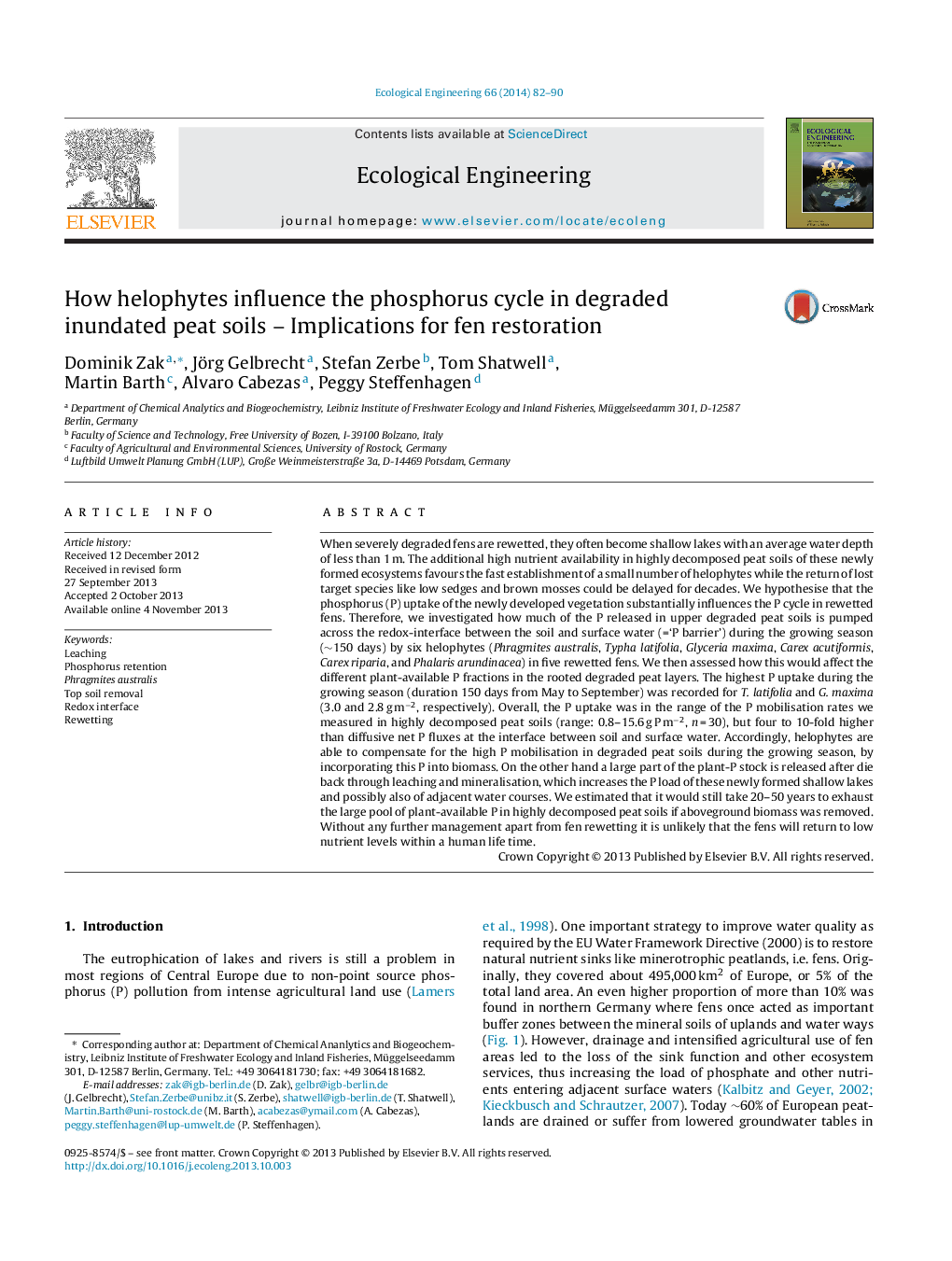| کد مقاله | کد نشریه | سال انتشار | مقاله انگلیسی | نسخه تمام متن |
|---|---|---|---|---|
| 4389541 | 1618033 | 2014 | 9 صفحه PDF | دانلود رایگان |
• Newly established helophytes in rewetted fens strongly influence the P cycle.
• P uptake from helophytes compensates for P release from highly decomposed peat.
• Most P in aboveground biomass will be released due to leaching and decomposition.
• To achieve low nutrient conditions rewetting should be combined with above-ground plant biomass removal.
• Plant-available P might be exhausted in 20–50 y if biomass removal is performed.
When severely degraded fens are rewetted, they often become shallow lakes with an average water depth of less than 1 m. The additional high nutrient availability in highly decomposed peat soils of these newly formed ecosystems favours the fast establishment of a small number of helophytes while the return of lost target species like low sedges and brown mosses could be delayed for decades. We hypothesise that the phosphorus (P) uptake of the newly developed vegetation substantially influences the P cycle in rewetted fens. Therefore, we investigated how much of the P released in upper degraded peat soils is pumped across the redox-interface between the soil and surface water (=‘P barrier’) during the growing season (∼150 days) by six helophytes (Phragmites australis, Typha latifolia, Glyceria maxima, Carex acutiformis, Carex riparia, and Phalaris arundinacea) in five rewetted fens. We then assessed how this would affect the different plant-available P fractions in the rooted degraded peat layers. The highest P uptake during the growing season (duration 150 days from May to September) was recorded for T. latifolia and G. maxima (3.0 and 2.8 g m−2, respectively). Overall, the P uptake was in the range of the P mobilisation rates we measured in highly decomposed peat soils (range: 0.8–15.6 g P m−2, n = 30), but four to 10-fold higher than diffusive net P fluxes at the interface between soil and surface water. Accordingly, helophytes are able to compensate for the high P mobilisation in degraded peat soils during the growing season, by incorporating this P into biomass. On the other hand a large part of the plant-P stock is released after die back through leaching and mineralisation, which increases the P load of these newly formed shallow lakes and possibly also of adjacent water courses. We estimated that it would still take 20–50 years to exhaust the large pool of plant-available P in highly decomposed peat soils if aboveground biomass was removed. Without any further management apart from fen rewetting it is unlikely that the fens will return to low nutrient levels within a human life time.
Journal: Ecological Engineering - Volume 66, May 2014, Pages 82–90
